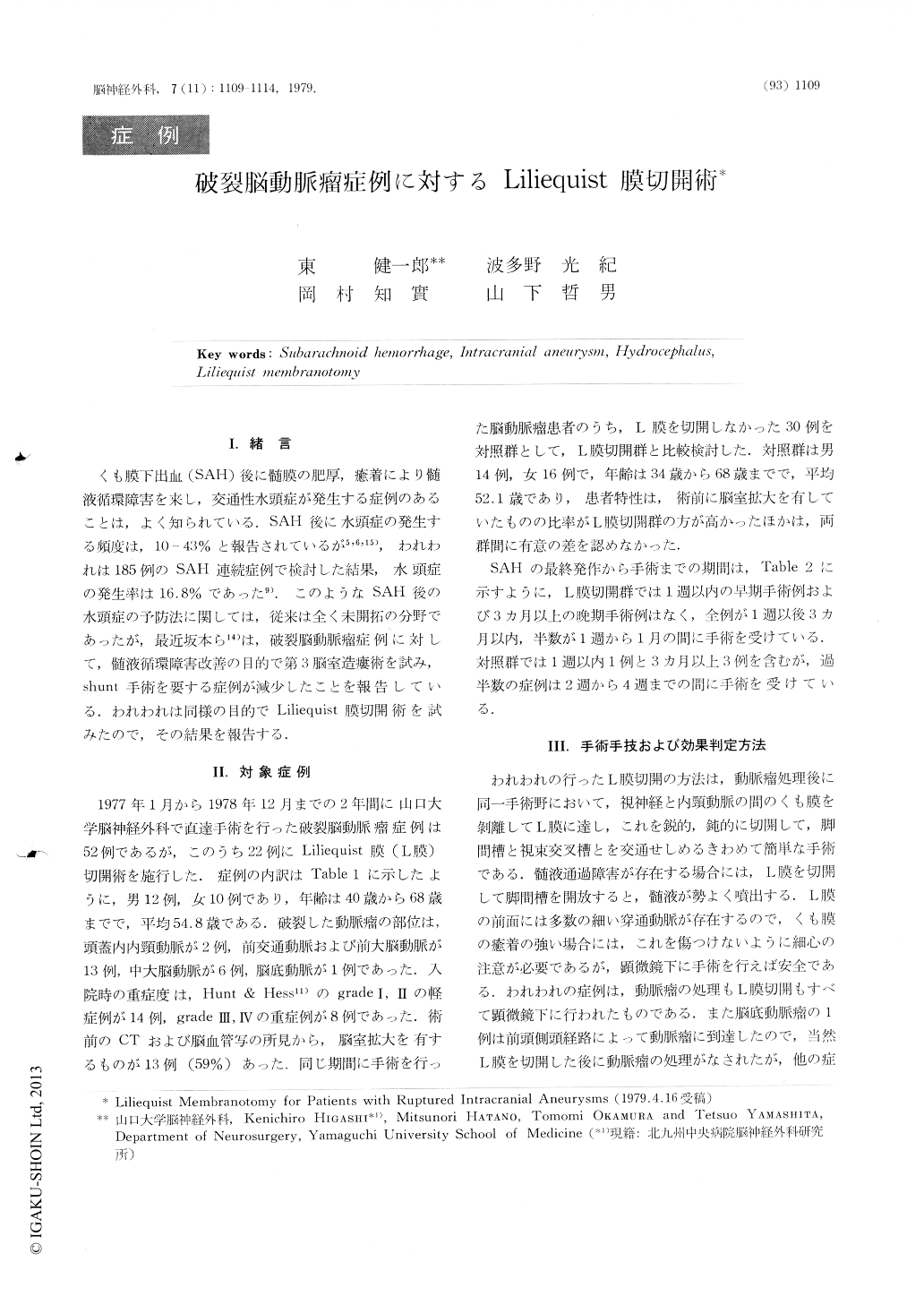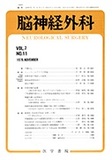Japanese
English
- 有料閲覧
- Abstract 文献概要
- 1ページ目 Look Inside
Ⅰ.緒言
くも膜下出血(SAH)後に髄膜の肥厚,癒着により髄液循環障害を来し,交通性水頭症が発生する症例のあることは,よく知られている.SAH後に水頭症の発生する頻度は,10-43%と報告されているが5,6,15),われわれは185例のSAH連続症例で検討した結果,水頭症の発生率は16.8%であった9).このようなSAH後の水頭症の予防法に関しては,従来は全く未開拓の分野であったが,最近坂本ら14)は,破裂脳動脈瘤症例に対して,髄液循環障害改善の目的で第3脳室造瘻術を試み,shunt手術を要する症例が減少したことを報告している,われわれは同様の目的でLiliequist膜切開術を試みたので,その結果を報告する.
In order to reconstruct the blocked CSF pathway, we attempted to excise the Liliequist membrane in 22 patients with suharachnoid hemorrhage resulted from ruptured intracranial aneurysms. After clipping the aneurysmal neck, the Liliequist membrane was reached through tne space between the optic nerve and the internal carotid artery within the same operative field.
As a result, the incidence of postoperative ventricular dilatation was remarkably reduced in comparison with control cases without Liliequist membranotomy. The necessity for the shunt operation for post-SAH hydrcc ephalus was also reduced.

Copyright © 1979, Igaku-Shoin Ltd. All rights reserved.


